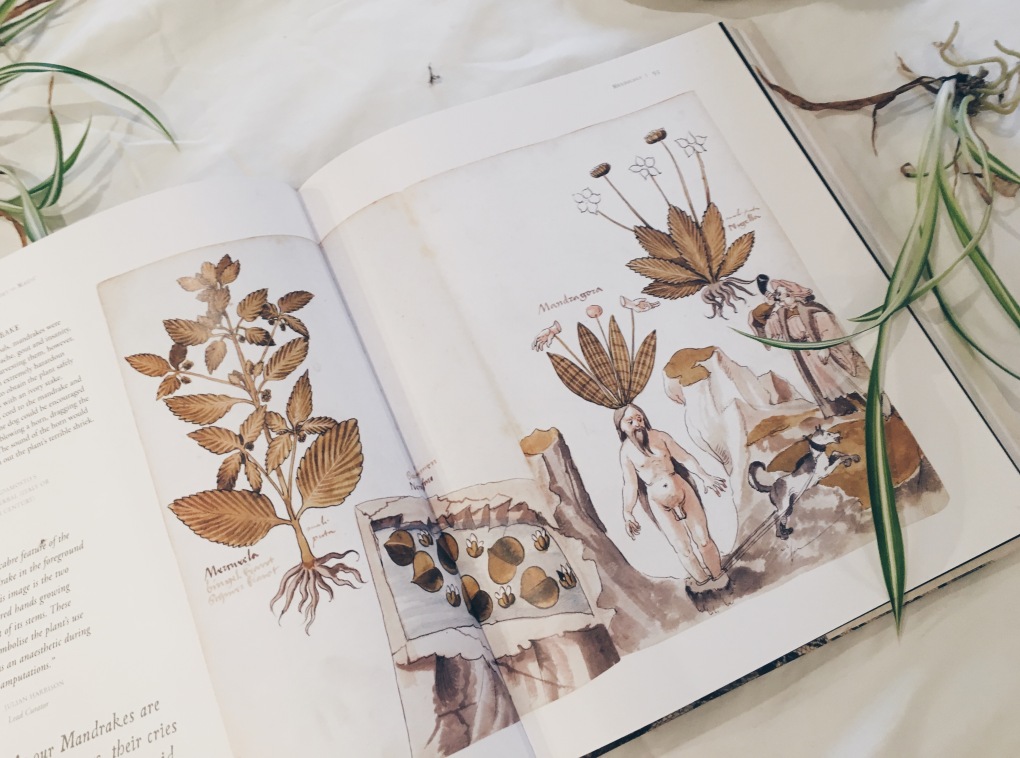Exhibition Review: Harry Potter: A History of Magic

‘I’ve got to go to the Library!’ Hermione Granger exclaims in Hary Potter and The Chamber of Secrets. Whilst Ron just shrugs and dismisses it as ‘that’s what Hermione does’, this is most definitely a time you do want to go to the library.
Flowing from room to room, subject to subject, the layout encourages people to follow the wall of exhibits and in doing so avoids, for the most part, the claustrophobic feeling of having to fight through elbows and bags to catch a glimpse of an item, something which would have most definitely marred this experience.
Starting with an almost foyer-like room, my immediate thought was ‘oh, I wish I could take photos’ (All photographs apart from the feature image and the picture below of the house flags are taken, by me, from the Harry Potter: A History of Magic companion book). However, this was quickly eclipsed by sheer excitement, and – I’ll admit it – emotion. Under a flock of flying books, and sitting alongside the original synopsis for Philosophers stone, was, arguably one of the most pivotal pieces of paper in the Harry Potter journey: a note, written by 8-year-old Alice Newton to her father (the Chief Executive at Bloomsbury Publishing). This note, exclaiming ‘I think it is possibly one of the best books an 8/9 yearold could read [sic]’, began the journey to Hogwarts for so many. As such, it seems only fitting that this started the exhibition.

Spanning both time and space A History of Magic doesn’t shy away from blurring both historical and global boundaries apparating patrons from the 1990s to 100 BC and back again. But it worked. In fact, I found that it helped to keep the older artefacts and information grounded and relatable. Between the quotes on the walls, the broomsticks on the ceiling, and the attire worn by some of the visitors, it was hard to forget that we were at an exhibition about Harry Potter but it was nice to see how they fitted into the thought process and the story as you went round.
From the cosy red of the Divination room and the sparkling blue showcase of Astronomy to the shadowy windows of Care of Magical Creatures each room housed a

different Hogwarts subject and was dressed to match. In the opening video, J.K attests that she made up 95% of the magic used within the books and yet there is so much that readers of the series will be familiar with. We meet, in possibly one of the most beautiful pieces, the real Nicholas Flamel and instructions on how to make the Elixir of life; the Philosopher’s Stone. In vibrant colours, illustrations of dragons, birds, warriors, the earth, moon, and sun, it sat proudly in the middle of the Potions and Alchemy ‘classroom’ attracting whispers of awe.
Mandrakes feature heavily in the Herbology class and, while they don’t appear as babies but more as bearded and slightly grumpy men, there is no denying that Mandrakes are not an original creation from J.K. Rowling. It is even well documented that the roots also tend to be twisted into human-like forms. Many cultures have been influenced by this imagery, possibly exacerbated by the hallucinogenic properties that the roots can have.

Among these inspiration fuelling artefacts – Mermaids, cauldrons, wands, bones, crystal balls, and so much more – were, I would argue, the most exciting things for my Harry Potter loving self to see. As one would expect, throughout there were items, writings, notebooks, and drawings not only on loan from J.K. Rowling but produced by her as well. Lists of alternative names for the teachers, subjects, and houses as well as other ways we may have seen the students be sorted sat among cauldrons, star charts, bones and ancient books. It was these things that I had the hardest time moving on from. To see that thought process; the evolution of the details that have come to mean so much was incredible.

There was even an early draft of a chapter from Philosophers stone. Many of us huddled around the display reading the four pages, and I am sure I am not alone in wondering just how different the story may have been if that version became more than just a draft.
After the exhibition, we visited the British Library’s Treasures Gallery. Housed were manuscripts from Dickens, Elliot, and of Beowulf. A quote from Phillip Larkin exclaimed ‘the magic of manuscripts’. Whilst I understood this looking at the scrawls of Dickens, it was a spark that I felt far more when gazing at the notebooks which housed chapter seventeen. To be able to see the planning, the timelines, the scribbled margins and the crossings out is something that I will never be able to fully explain.
Have you been to see the exhibition, what did you think? Who’s your favourite Harry Potter character? Let me know in the comments section below.



Ohhh my goodness…I NEED to visit this exhibition so badly, I adore Harry Potter and I bet it’s such a special treat visiting 🙂 x x
Ellis // http://www.elliswoolley.co.uk
LikeLike
where abouts is this exhibition?! I would love to go. I have only just finished reading the first Harry Potter book and I can tell I am turning into a massive fan haha! Have you been to the Harry Potter Studios before? I went a few years ago and I loved it!
LikeLiked by 1 person
It’s in London, at the British Library; unfortunately, I think it ends on the 28th February 😕 Oh, I so wish I could go back and read them for the first time again … enjoy it. Yes, I have it was fantastic although, I remember the Butterbeer being very disappointing. Thank you for taking the time to comment x
LikeLiked by 1 person
ohh no:( I can’t wait to read them all, thank you! and yes same! I was expecting great things but it tasted horrible, and thats okay its been nice chatting! x
LikeLiked by 1 person
I went to the exhibition a few months ago and loved it! Lots of fascinating facts and the companion book is lovely too.
LikeLiked by 1 person
It really is gorgeous, glad you had a good time at the exhibition 🙂
LikeLiked by 1 person
Oh my gosh!! This looks AMAZING!! I’m so glad you got to attend!
Erica | Erica Robyn Reads
LikeLiked by 1 person
It really was! Thanks for commenting 🙂
LikeLiked by 1 person